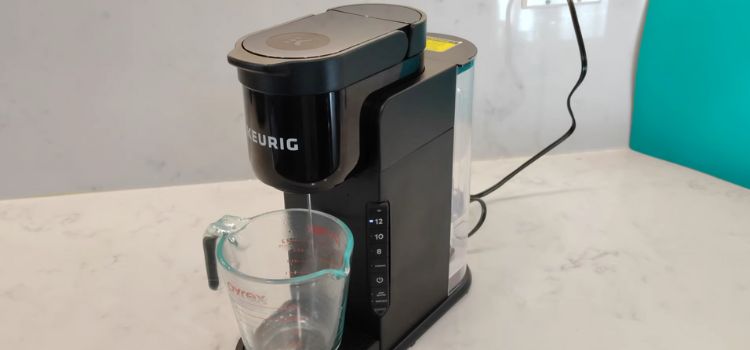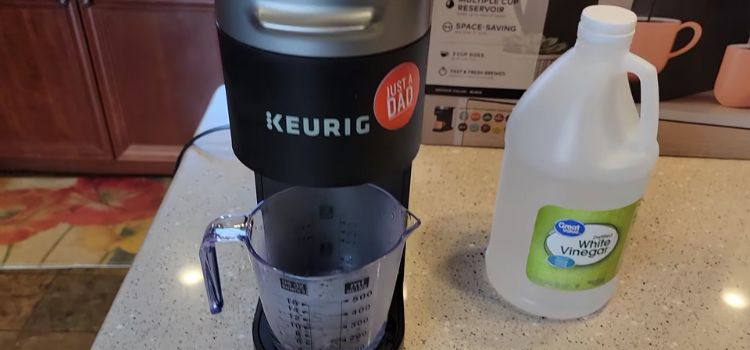As an Amazon Associate, I earn from qualifying purchases

For many coffee enthusiasts, a Keurig machine is a beloved appliance that simplifies the morning routine with its quick brewing capabilities. Whether it’s for a morning pick-me-up or an afternoon treat, the convenience of a Keurig is undeniable.
However, frustration quickly sets in when the machine refuses to pump water, leaving you coffee-less and bewildered. Understanding the potential reasons behind this issue and knowing how to tackle them can save you time and restore your coffee bliss.
In this guide, we’ll explore the common causes behind a Keurig not pumping water and provide thorough, step-by-step troubleshooting methods. We’ll also share tips to prevent future problems, ensuring your coffee maker remains reliable and efficient.
Common Reasons for Water Pumping Issues
When your Keurig isn’t pumping water, several culprits might be at play. Let’s delve into the most frequent causes so you can identify and address them effectively:
- Clogged or Blocked Water Lines: Over time, debris and mineral deposits from hard water can accumulate, obstructing the water lines. This blockage hinders the flow of water, affecting the machine’s performance.
- Air Bubbles Trapped in the System: Sometimes, air bubbles can form and become trapped within the water lines or pump. These bubbles disrupt water flow and pressure, preventing the machine from functioning correctly.
- Faulty or Misaligned Water Reservoir: An improperly placed or malfunctioning water reservoir can prevent water from flowing into the machine. Ensuring the reservoir is correctly aligned and securely attached is essential for proper operation.
- Pump Malfunction or Damage: The pump is a crucial component responsible for moving water through the system. Wear and tear or damage can impair its function, leading to pumping issues.
Step-by-Step Troubleshooting and Repair Methods

Now, let’s explore practical solutions to resolve water pumping issues and get your Keurig back in action:
- Clearing Blockages from Water Lines: Start by unplugging the machine and removing the water reservoir. Inspect the water lines for visible debris. Using a descaling solution or a mixture of vinegar and water, fill the reservoir and run several brew cycles without a pod. This process helps dissolve mineral deposits and clear blockages.
- Removing Air Bubbles: To release trapped air bubbles, try gently tapping the machine while it’s off or lifting and shaking the water reservoir. Another effective method is filling the reservoir with water, then lifting it slightly and letting it drop into place, repeating this motion several times to expel air.
- Inspecting and Repositioning the Water Reservoir: Ensure the reservoir is seated correctly by removing and reattaching it. Check for any damage or misalignment that might impede water flow. Ensure the reservoir is filled adequately and securely placed to maintain a steady flow.
- Examining and Repairing the Pump: If the pump seems to be malfunctioning, listen for unusual noises or lack of action when the machine is on. Refer to the manufacturer’s guide for specific repair instructions or consider professional servicing if the pump needs replacement.
Tips for Preventing Future Problems
Prevention is key to avoiding future water pumping issues. Implementing these tips can keep your Keurig running smoothly:
- Regular Maintenance and Cleaning Schedule: Establish a routine cleaning schedule, including descaling every three to six months, depending on usage and water type. Regular cleaning helps prevent the buildup of debris and mineral deposits.
- Use of Filtered or Distilled Water: Using filtered or distilled water reduces the risk of mineral buildup, extending the life of your machine and ensuring efficient performance.
- Proper Handling and Placement of Components: Pay attention to how you handle and reassemble components after cleaning. Ensuring everything is correctly aligned and securely in place can prevent operational issues.
- Monitoring Machine Performance: Keep an eye on your Keurig’s performance. If you notice any irregularities, such as strange noises or slower brewing, address them promptly to prevent major problems from developing.
Conclusion
A Keurig that’s not pumping water can disrupt your daily routine, but with the right knowledge and troubleshooting techniques, you can tackle this issue effectively. By understanding the common causes and implementing the solutions outlined, you can restore your Keurig’s functionality and prevent future problems. Regular maintenance, using filtered water, and paying attention to the machine’s components will ensure a long-lasting, trouble-free brewing experience.
Remember, your Keurig is designed to make your life easier. With these tips and strategies, you can continue to enjoy the convenience and satisfaction of a well-maintained coffee maker, ensuring every cup is brewed perfectly. Happy brewing!
FAQ
Why is the water not flowing through my Keurig?
Water flow issues in your Keurig can be due to clogged needles, air bubbles, or a misaligned water reservoir. Regular cleaning, descaling, and ensuring all components are properly positioned can help restore normal water flow and improve machine performance.
Why does my Keurig say Prime?
The “Prime” message usually indicates an issue with the water reservoir, such as improper placement or a need for cleaning. Remove and reseat the reservoir, check for blockages, and ensure it’s filled to the appropriate level to clear the alert.
Why does my Keurig say add water?
When your Keurig displays “add water,” it means the water reservoir is either low or not properly seated. Fill the reservoir to the recommended level and ensure it’s firmly in place, aligning it correctly with the machine’s connection points.
Why does my Keurig take so long to pump water?
A slow pumping Keurig may suffer from mineral buildup, clogged needles, or air pockets. Descale the machine, check and clean the needles, and ensure the water reservoir is properly seated to improve the speed of water pumping. Regular maintenance can prevent future slowdowns.
As an Amazon Associate, I earn from qualifying purchases